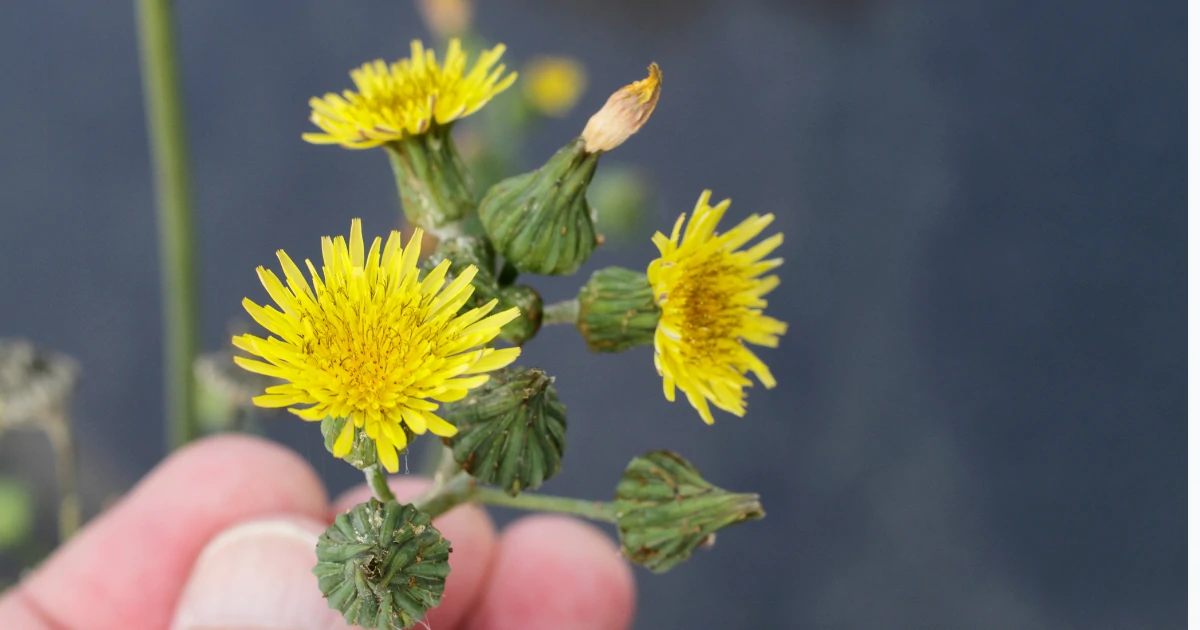Sonchus oleraceus, also known as common sowthistle, is an annual herb in the Asteraceae family. This fast-growing weed is native to Europe and western Asia but now grows widely around the world. It’s considered an invasive species in some regions. However, when properly managed, common sowthistle can also make a useful edible crop for the garden. Read on for more sow thistle information and sowthistle growing instructions.
Growing Conditions for Sonchus Oleraceus

Common sowthistle is tolerant of many conditions but prefers full sun and moist, fertile soil to thrive. Here are some key requirements for sowthistle care:
Soil Requirements
Sowthistle will tolerate most soils but does best in nutrient-rich loam. Well-draining soil is ideal. The plants can withstand clay but may become lanky.
Sunlight Needs
For best growth and leaf yield, sow thistle requires full sunlight. At least 6 hours of direct sun per day is recommended. With too much shade, the stems elongate and foliage diminishes.
Watering Guidelines
Established sowthistle needs consistent moisture, about 1-2 inches of water per week. Drought can cause bitter or tough leaves. But take care not to overwater as soggy soil can lead to root rot.
Learn ZZ Plant Propagation here
How to Plant Sonchus Oleraceus

There are two main methods for starting common sowthistle from seed.
Starting from Seed
Sow thistle grows readily from seed. Start seeds indoors 6-8 weeks before your last expected frost. Place seed trays in a sunny window and maintain 70°F soil temperature. Thin seedlings to 6 inches apart. Young plants can withstand light frost, allowing for an early spring transplant into the garden after the last hard frost.
Transplanting Seedlings
For a continuous sowthistle harvest, sow new batches of seeds every 2-3 weeks in early spring. Harden off young plants for 7-10 days before moving outdoors. Transplant seedlings when they reach 4-6 inches, spacing about 12 inches apart in all directions or wider depending on desired plant size. Water thoroughly after transplanting.
Check out How to Propagate a Ric Rac Cactus here
Caring for Sonchus Oleraceus

With proper sow thistle plant care, you can enjoy vigorous growth and abundant leafy greens for months.
Fertilization
Apply balanced liquid fertilizer or compost tea every 2-3 weeks to fuel growth of this fast-growing plant.
Pruning
Pinch or snip off flower buds as they form to direct the plant’s energy towards leaf and stem production.
Pest and Disease Control
Common sowthistle is untroubled by most pests and diseases. Occasionally aphids may appear but can be sprayed off with water. Practice crop rotation and promote beneficial insects to prevent potential pest problems. Slugs may chew leaves and can be hand-picked or trapped.
Learn how to care Fiddle Leaf Fig Plant here
Harvesting Sonchus Oleraceus

Harvest sowthistle as you would any leafy green.
When and How to Harvest
Individual leaves can be picked as needed once plants reach 6 inches tall. For full stems, wait until plants are 12 inches tall and pinch off right above ground level. This allows the roots to regenerate new growth.
What Parts to Harvest
The leaves, shoots, stems, flowering heads and taproots are all edible. The younger leaves tend to be more tender. Rubbery outer leaves should be removed before cooking older plants.
Learn how to care for The Raven ZZ Plant here
Uses for Sonchus Oleraceus

This versatile plant has many culinary and medicinal benefits:
Culinary Uses
Sowthistle has a mild flavor compared to other bitter greens. Leaves and stems can be used raw in salads or sautéed, steamed or added to soups. Flower buds can be boiled like broccoli or added to stir fries.
Medicinal Uses
Traditionally used to stimulate bile production and treat liver conditions. Modern research indicates antioxidant, anti-inflammatory and anti-cancer effects from compounds in sowthistle. The leaves are used to make healthful teas.
Tips for Growing Sonchus Oleraceus
- Start seeds early indoors for a longer harvest window
- Pinch off flowers to optimize foliage growth
- Harvest leaves frequently for continual regrowth
- Plant in raised beds for better drainage and root development
Learn how to Make a Terrarium here
Conclusion

While considered a nuisance weed by some, common sowthistle is a tasty, nutritious edible that is easy to incorporate into any vegetable garden rotation when properly managed. With modest care, sowthistle produces abundant edible leaves and shoots all season long. Try growing this underutilized permaculture plant for an excellent source of vitamins, minerals and phytonutrients.
Frequently Asked Questions
Q: Is common sowthistle invasive?
A: Yes, sowthistle spreads readily by seeds and can become invasive in some regions if not properly controlled. Maintain healthy soil and pull unwanted plants before they go to seed.
Q: Can you eat raw sowthistle?
A: Yes! Young sowthistle leaves and shoots can be eaten raw in salads or juiced. They have a mild, slightly grassy flavor.
Q: What’s the difference between annual and perennial sowthistle varieties?
A: Annual sowthistle survives one growing season, produces seeds, and dies. Perennial sowthistle comes back every year from the same root system. Both can be harvested similarly.
Q: Does sowthistle attract pollinators?
A: Yes! The bright yellow flowers provide early season forage for all types of beneficial pollinating insects like native bees and honeybees.
Q: What are some substitutes for sowthistle in recipes?
A: Common sowthistle has similarities to dandelion greens and can be used similarly in recipes. Other mild greens like spinach, kale or chard also make good substitutes.

1 thought on “How to Grow Sonchus Oleraceus | Common Sowthistle Care”